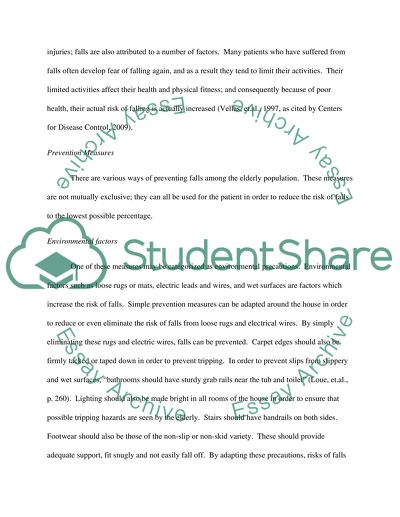Cite this document
(“Fall Prevention Essay Example | Topics and Well Written Essays - 3000 words”, n.d.)
Fall Prevention Essay Example | Topics and Well Written Essays - 3000 words. Retrieved from https://studentshare.org/sociology/1512358-fall-prevention
Fall Prevention Essay Example | Topics and Well Written Essays - 3000 words. Retrieved from https://studentshare.org/sociology/1512358-fall-prevention
(Fall Prevention Essay Example | Topics and Well Written Essays - 3000 Words)
Fall Prevention Essay Example | Topics and Well Written Essays - 3000 Words. https://studentshare.org/sociology/1512358-fall-prevention.
Fall Prevention Essay Example | Topics and Well Written Essays - 3000 Words. https://studentshare.org/sociology/1512358-fall-prevention.
“Fall Prevention Essay Example | Topics and Well Written Essays - 3000 Words”, n.d. https://studentshare.org/sociology/1512358-fall-prevention.


